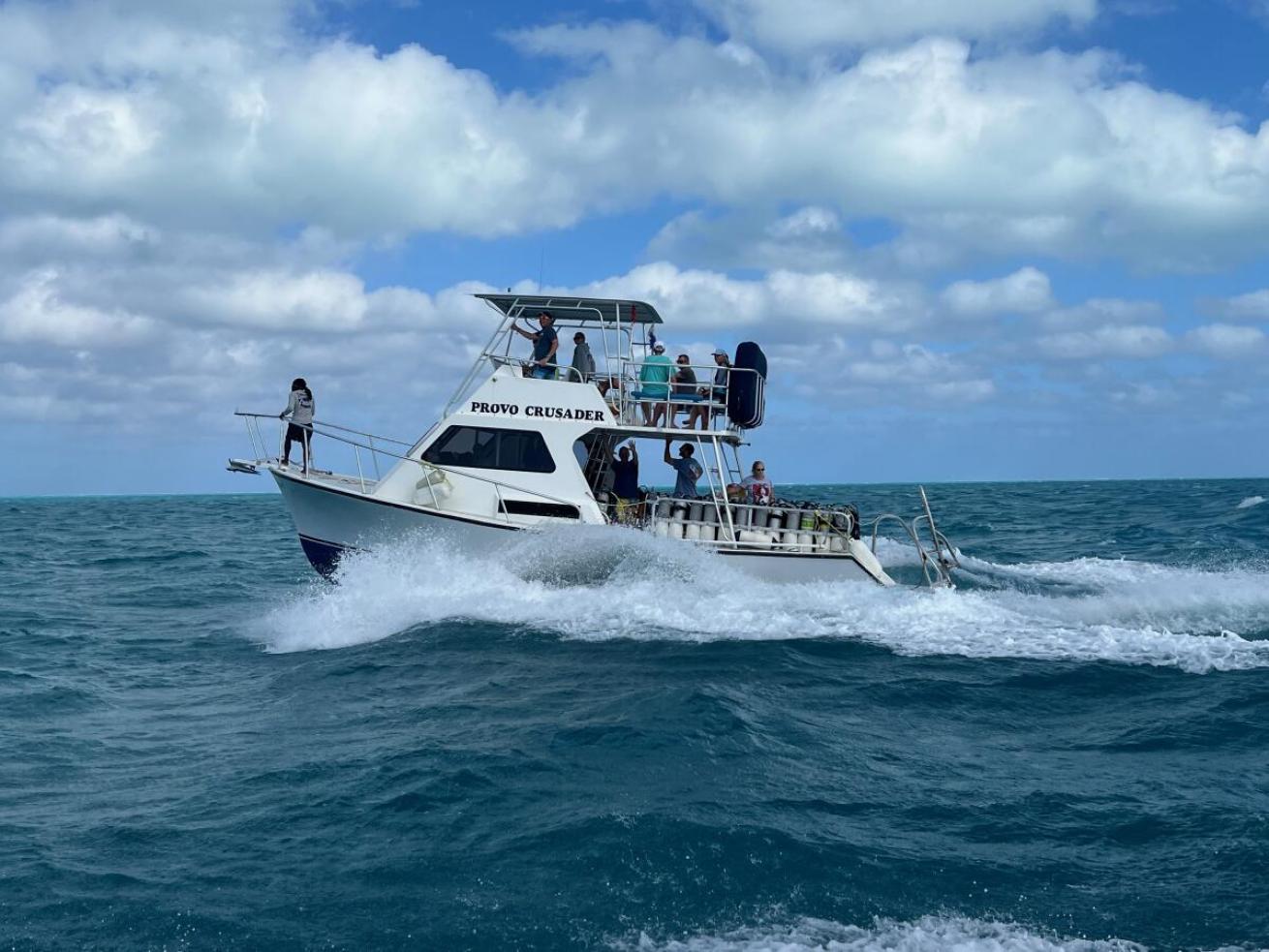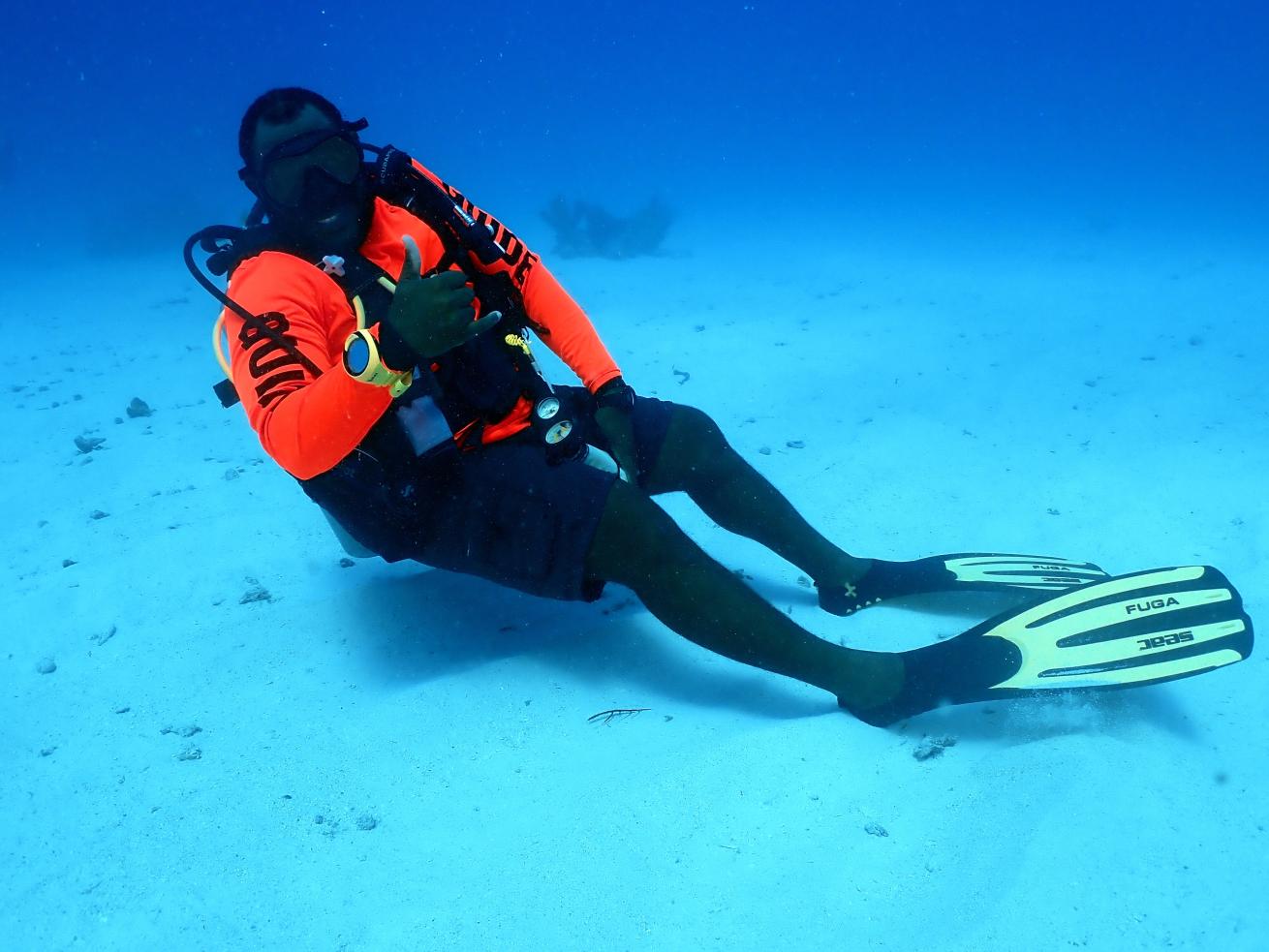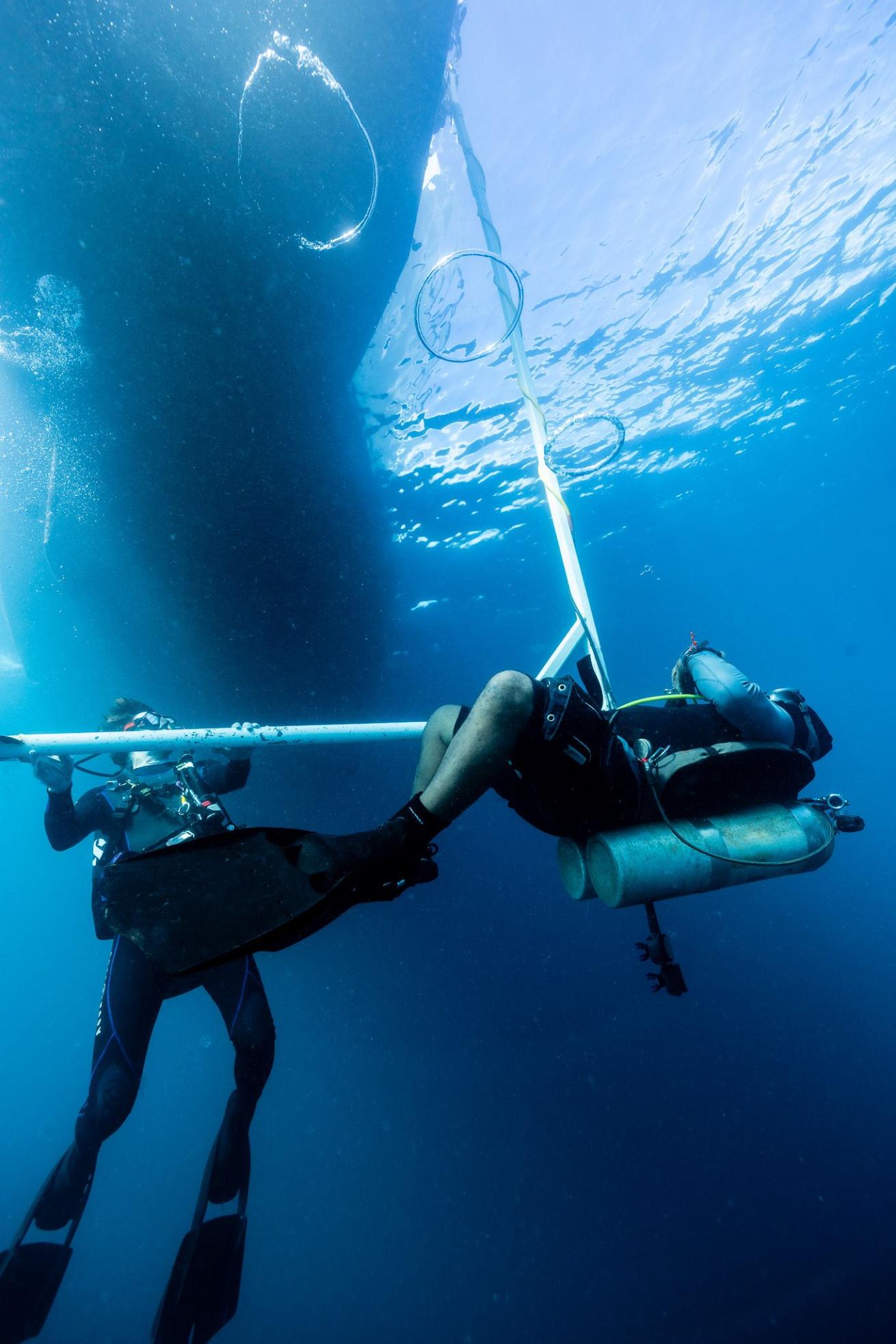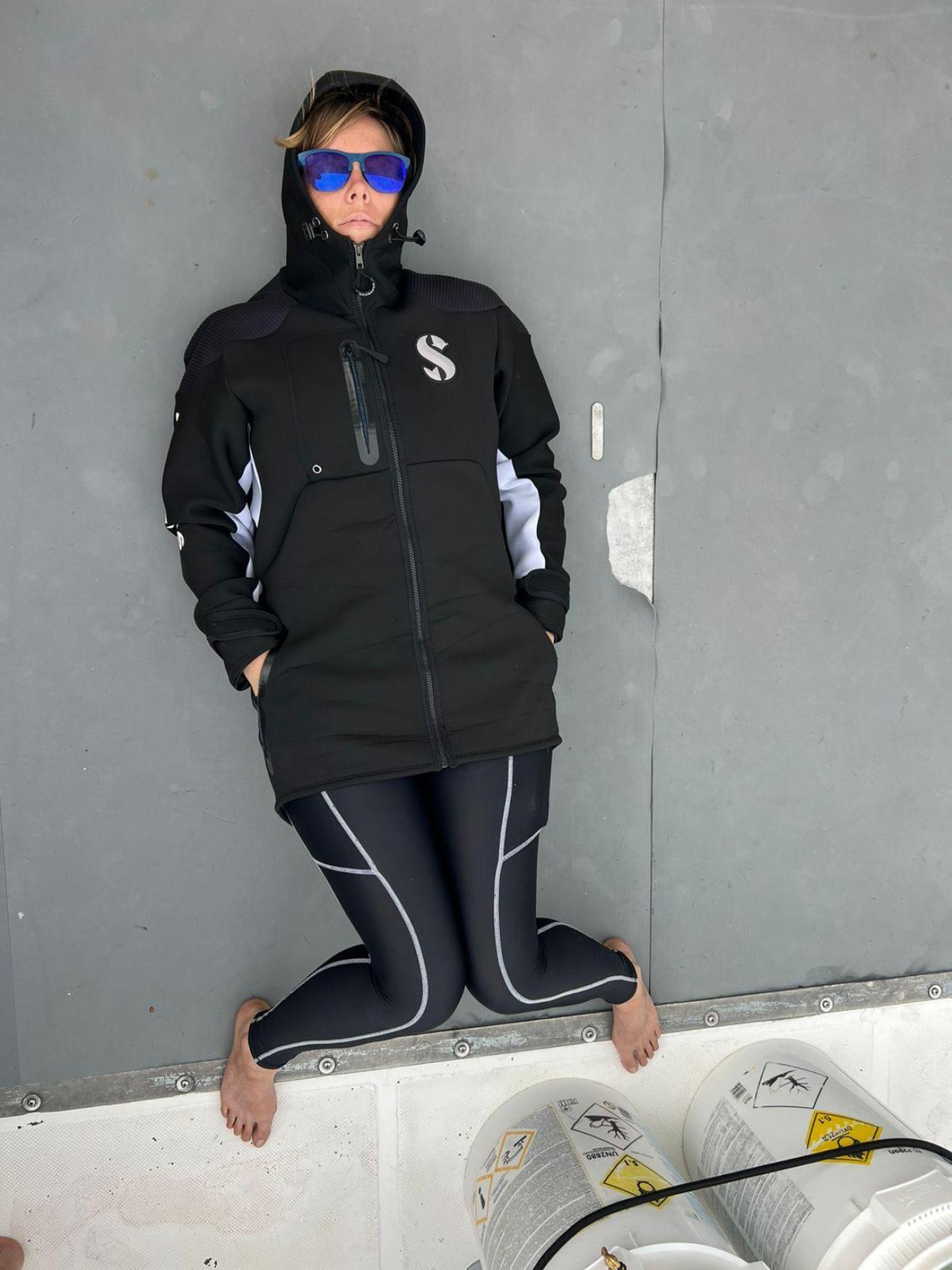8 Amenities to Look for When Booking a Dive Boat

Candice LandauWhat to look for when booking a dive boat like this.
A dive boat is more than just a convenient way to get to dive sites. The best boats make the entire diving experience easy, safe, and enjoyable, so you can focus on what you’re there to do: dive!
From enhanced safety features and educational resources to onboard amenities that make your surface interval a breeze, there are countless factors to consider when selecting a dive boat operator. If you’ve never booked a dive boat before—or are looking for some ideas to suggest to your favorite operator—this guide is for you.
Here are eight helpful, convenient, and downright cool amenities to look for the next time you’re booking a dive boat.
Bright Guide Vests
Have you ever been diving in a large group with multiple dive guides, only to realize partway through that you’ve been following the wrong guide? Even if it’s only for a minute, it can be a frustrating experience, and anxiety-inducing for newer divers.
Many dive guides have developed tricks for keeping their flock from wandering off. Colorful fins, drawing on their fins, or (this one is especially clever) wearing mismatched fins can help them stand out in the underwater crowd, as will wearing distinctive exposure suits or hoods.

Candice LandauA guide with Dive Provo, easily distinguished by his bright vest.
The best dive boats make this a non-issue. Take Dive Provo, based on Providenciales in the Turks and Caicos islands. They outfit all of their dive guides with bright orange vests to wear over their exposure protection. Better yet, their shirts even read, “Guide”. This simple addition makes it easy to find your guide in a large group, rather than trying to pick them out of twelve different people all wearing black wetsuits.
Underwater Lift Bag Buoys
Even if your dive guide is brightly clothed, sometimes divers still get lost. Or maybe you and your buddy are doing your own dive without a guide. Either way, having underwater navigation aids is especially helpful at a site you’ve never dived before, and is something to ask about, especially for newer divers.
Dive Provo had an elegant solution to creating distinctive underwater navigation points at every site—an underwater lift bag. A bright lift bag, filled just enough to float a few feet off the seafloor and secured under a rock so that it stays put, is an excellent underwater navigation aid.
The lift bag tactic is especially nice for sites that have another natural navigation aid, like a wall dive. Dive along the wall, and when you see the lift bag, swim straight toward it. Keep that heading and voila! You’ll find the dive boat. Easy peasy.
Related Reading: Best Dive Gear Bags of 2023 Reviewed
The Extra Safety of Extra Air
Having a line or a hang bar to hold onto while you’re doing your safety stop is always appreciated. But what happens if you’re low on air?
A smart safety feature to ask about is whether the operator makes extra air available at the line or hang bar. This ensures that even divers who are low on air can do their full safety stop, reducing the risk for everyone involved.
This could take the form of a tank tied to the bar, but a more convenient solution is to attach an extra long hose and regulator to a tank on the boat, and dangle the hose down to the bar. Since it’s easier and faster for the crew to set up, that means extra air will be available on every single dive, which means safer diving for you.
Eco-Friendly Meets Convenience

Candice LandauNotice the extra long hose wrapped around the hang bar. The guide blowing air rings is optional.
Not all features are about safety. Some are the little things that make being on the boat more pleasant. Take a sunglass line: a bit of string or rope tied horizontally across the ceiling where your sunglasses can hang out of the way. Instead of worrying about them getting lost or sat on, or stowing them where they’re inaccessible while the boat is underway, a sunglass line keeps them clean and handy for when the sun is shining during surface intervals.
The same is true for a more eco-friendly amenity: a drink cup line, hung over the water cooler with clips and a marker to write your name on your cup. Rather than throwing away your water cup after each use, you can reuse your cup after each of your dives, which saves trash and makes sure you stay hydrated. Lovely!
Hot Showers and Drinks
Here’s an amenity no one will complain about: hot water showers on the boat. There’s nothing quite like getting out of the ocean and blasting your wetsuit with hot water to warm up before toweling off. This is a key thing to ask about if you’re someone who gets cold easily or has trouble warming up, though if that’s the case, you might also consider acquiring a neoprene jacket so that you’re cozy no matter the boat.

Felipe MartinsAlso an option: sunbathing on the boat in a neoprene jacket.
But what about hot drinks? Normally only available on cold water dives, hot drinks are seldom offered on tropical dive boats because, well, it’s hot outside, right? Yet why not offer hot drinks as well—everyone just got out of the (colder than the air temperature) water, and a nice cup of coffee or tea can be as good as a hot water shower for returning life to a cold diver. It’s something to ask about or suggest if you’re prone to shivering on the deck between dives.
Food Options for All Diets
This is something that restaurants have been adapting to, or, in the case of your local BBQ joint, purposely refused to adapt to. But dive boat cuisine isn’t so unique as to be ruined by a few options, which is why it’s a relief when dive boat operators offer food alternatives for divers who are vegetarian, vegan, or gluten intolerant. That’s what Jack’s Diving Locker of Kona, Hawaii does, and it’s highly appreciated.
If this applies to you and a dive boat doesn’t offer options, let them know how easy it is to provide alternatives to those ham and cheese sandwiches. Swap the meat for plant-based protein or meat (like tofu, tempeh, or Tofurky deli slices—I suggest the hickory-smoked or peppered). Swap the cheese for plant-based cheese (Field Roast’s Chao is a favorite). Gluten-free bread is available in many areas. Check out the local grocery store and see what they have, so that you and future divers can have a more pleasant experience.
And for all the plant-based eaters out there, if you find a boat that offers vegetarian or vegan options, be sure to ask if it includes a protein. A sandwich full of salad just isn’t the same after an early rise and a long dive, and there are veggie alternatives that can make it work.
Related Reading: What It’s Like to Warm Water Dive For the First Time as a Cold Water Diver
Dive Maps, Boards, and Cards
Sometimes it’s hard to visualize the dive site or to know what you’re looking at when you’re underwater, and hand signals and slates can only do so much when you’re curious about what part of the wreck you’re on or what that unusual fish is called.
When you’re evaluating dive boats, ask how they run their dive briefings, and if they employ any maps or visual aids. This is especially important for wreck dives. After all, it’s much easier to understand where the pilot house or the engine room is after seeing it on a map first. Whether it’s a laminated diagram, a printed placard, or a drawing on a whiteboard scrawled by the guide with the best art skills, a visual aid can help you get the most out of a dive.
Jack’s Diving Locker adds a nice touch: a custom dive card (printed on business cards) with blank spaces for the names and a few details about the sites you dove that day. The guides fill them out and hand them to you before you disembark. Have you ever been at dinner after a dive day, talking about this amazing site, and you just cannot remember its name? Not if you have a dive card in your pocket. It’s a nice touch.
Related Reading: Seeing in Depth: What it Takes to Create Underwater Maps
Dive Elevator
This one is next level. Scuba Diving magazine Content Director Candice Landau recently visited Chuuk Lagoon and dove with Odyssey Adventures, and their boat, The Odyssey, has an elevator into the ocean.

Heidi IngramScuba Diving magazine’s Candice Landau on The Odyssey, about to be lowered into the ocean.
An elevator! Imagine getting all your gear on, and instead of giant striding into the water, you’re gracefully lowered into the sea. Or better yet, imagine keeping all your gear on—fins included!—and effortlessly rising out of the water on a custom-built elevator.
This isn’t something that many dive boats have, and probably not something you need to ask about. But it’s really cool, and undeniably luxurious, when a dive boat and their crew goes this far above and beyond to provide an amazing experience.










